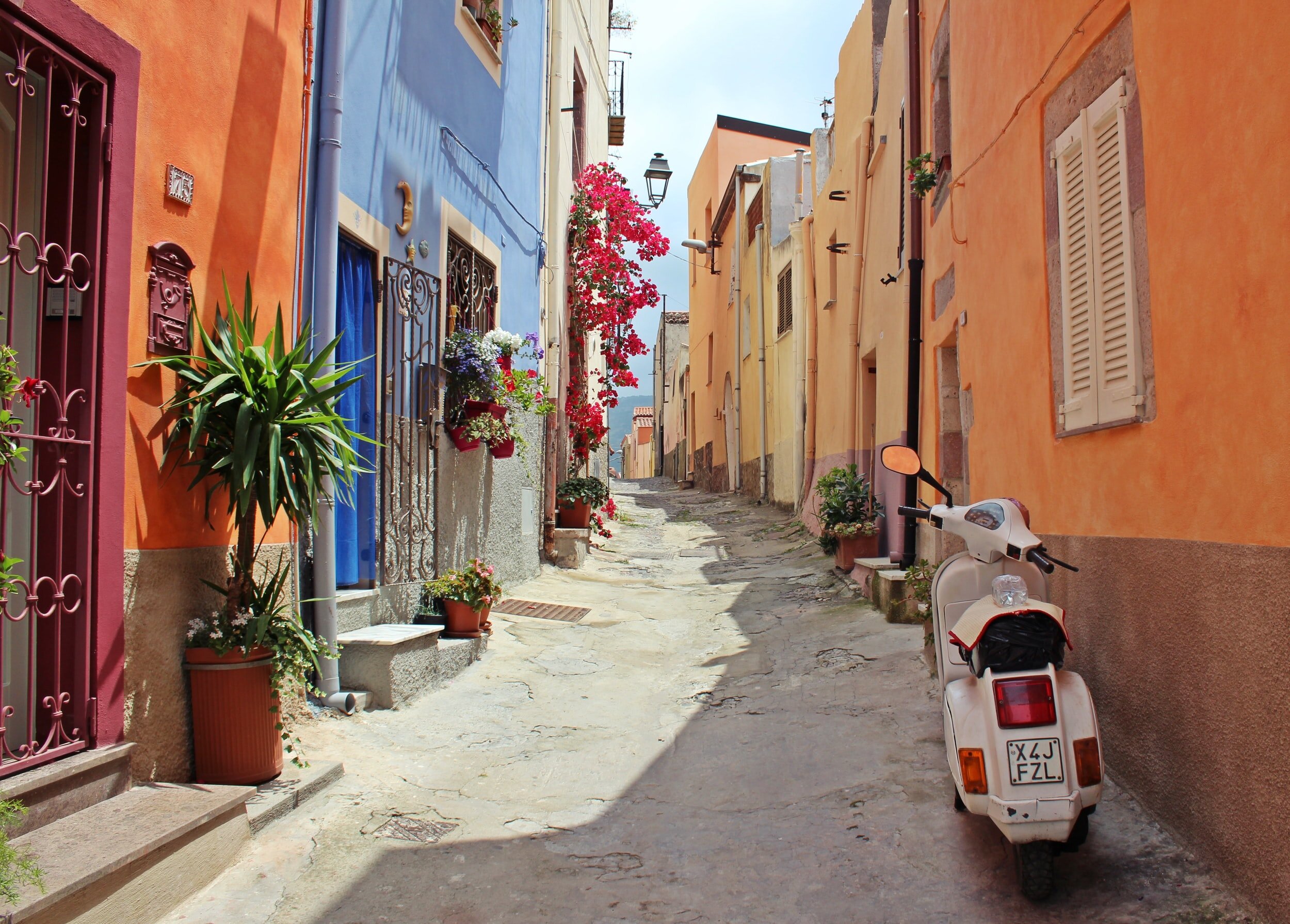How to Apply for Italian Citizenship Through Ancestry [Exact Steps]
If you’ve got some Italian blood in you, chances are you’re eligible to become an Italian citizen. On the LIVE Without Borders podcast, Italian citizenship expert Audra De Falco breaks down how we can apply for dual citizenship with Italy via jus sanguinis, the ‘right of blood.’
The steps Audra shares with us on the podcast helped me become an Italian citizen, and this second passport has transformed my life. Listen to the episode for our step-by-step guide on how to become an Italian citizen through ancestry.
Click a Button To Follow the LIVE Without Borders podcast for free
What are the benefits of Italian citizenship?
Italian citizenship also grants you E.U. citizenship. That gives you the right to live and work anywhere in the European Union. You’d also have a right to healthcare, and it would be easier for you to buy property in Italy. If you or your kids want to continue your education, you’ll pay local prices.
These days, most countries will let you keep the citizenship you were born with when you acquire a second citizenship, hence ‘dual citizenship.’
Who is eligible to become a dual citizen with Italy through ancestry?
Italian citizenship isn’t limited to people with Italian parents or grandparents. You can go back as far as you want, but there are a few quirky rules:
The ancestor you’re trying to claim citizenship through must have been alive, and not yet a citizen of another country, on or after March 17, 1861. This is the date that Italy unified as a country -- Italian citizenship did not exist before then.
You’re likely eligible for dual citizenship with Italy if your ancestor naturalized after having kids, meaning they gave up their Italian citizenship to become a U.S. (or other) citizen after having kids. If they gave up their Italian citizenship before having kids, sadly, you won’t be eligible for dual citizenship. Why is this? Well, if they had their kids before naturalizing, then everyone down the line after that is technically Italian in the eyes of the law. If you qualify, when you apply for dual citizenship, you’d be reclaiming your birthright. But if your ancestors naturalized before having kids, they ended their Italian line. This is because they weren’t Italians when they had kids, they were Americans (or wherever) having kids.
Your ancestor will have to have naturalized after July 1, 1912, or to have never naturalized. This is because Italy’s modern citizenship rules went into effect on July 1, 1912, and so anyone who naturalized before this date became ineligible to pass on citizenship.
If you’re trying to get citizenship through your maternal line, her kids must have been born after January 1, 1948. Until then, Italy didn’t let women pass on citizenship. However, since 2009 people have been successfully challenged this in court in Rome.
Applying for Italian citizenship in Italy
Audra and I moved to Italy to apply for dual citizenship, and, if you’re the adventurous type, this is the fastest way to get your passport. You don’t have to apply in the town of your ancestor’s birth; you can apply anywhere in Italy.
Here’s what you need to do
Gather the direct-line documents you need:
birth and marriage certificates down the line to you from your ancestor. So for me, my great-grandfather’s documents, my grandfather, my mother, me. You’ll likely need to contact the town hall (comune) of your ancestor’s birth to get a copy of their birth certificate, and marriage certificate if they wed there.
Note: While Italy doesn’t require death certificates, Audra says it’s still a good idea to have these.
You will also need the naturalisation document of the ancestor from whom you’re trying to get Italian citizenship. If your ancestor never naturalised, you need proof of that. If you’re a U.S. citizen, contact the United States Citizenship and Immigration Service and the National Archives and Records Administration. They’ll run a search on your ancestor on their name, date of birth, place of birth. If they can’t find your ancestor, they’ll give you a letter saying ‘no record found.’ You can use that for Italy.
These documents need to be translated into Italian. Audra’s company, Get Italian Citizenship, offers this service.
The documents also need to be apostilled. This is a certification by the Secretary of State of the state where the docs are coming from that says they’re legit. This makes them legal for use in Italy.
Fly into an Italian airport and get a stamp on your passport. If you come via another Schengen country or a different way that doesn’t get you that stamp, within 8 days of your arrival you need to declare your presence (dichiarazione di presenza) at the local police station (questura).
Rent a place and have a rental contract or declaration of hospitality.
Take your rental contract or hospitality declaration to the ufficio anagrafe and fill out your residency form. The town then has up to 45 days to send an officer (vigile) to your home to confirm you live there. Ask how they will contact you. They tried contacting me by phone for a month before I picked up (I was too embarrassed by my rubbish Italian to talk on the phone. I thought they’d email me).
Once the vigile confirms you are a resident, you need to hand in your citizenship documents at the ufficio di stato civile (or ufficio cittadinanza, depends on the town). They’ll scan all your documents and send them via ‘registered email’ to the consulate in your home country. They want confirmation that no one down the line from your Italian ancestor ever renounced their right to Italian dual citizenship. For example, if you’re trying to get dual citizenship through your great grandfather, they want to make sure that your descending grandparent, parent, and you did not renounce citizenship rights. If there’s no evidence of renunciation, that is what they’ll report back (this is called attestato di non rinuncia).
They’ll certify you’re an Italian citizen and you can get your Italian passport!
Permesso di soggiorno
While you are waiting for your citizenship to come through, you should apply for a visa so you can stay in Italy for more than 90 days. This is just in case it takes awhile for your citizenship to come through (it shouldn’t take more than 90 days). This visa is called the permesso di soggiorno in attesa di cittadinanza. You can apply at the post office in your Italian town. You’ll need the receipt from your citizenship application.
Applying for Italian citizenship while in your home country
Applying for Italian dual citizenship from your home country is more complicated and takes a lot longer. For example, if you apply in the U.S., in addition to the documents required if you apply in Italy (see above), your local consulate usually needs death and divorce documents.
Here’s what you need to do
Make an appointment with the Italian consulate in your district. Getting an appointment can take from six months to 10 years (this is in Los Angeles). Unfortunately, you are not free to choose the consulate to apply to. You have to go to the one in your jurisdiction — there are 10 in the U.S. — and you’ll need proof of your residency when you go to your appointment.
Check your consulate’s website to find out what your document requirements are. Some only require paperwork (birth, marriage, death, and divorce certificates) for the direct line, for example: Great grandfather (Italian) — Grandfather — Mother — Person Applying. However, other consulates will require that you have all those documents for their spouses (non-direct line), as well. Audra recommends that you start collecting the documents for your Italian ancestor first and work your way up to you.
Any inconsistencies with name spellings will likely have to be amended in court, but this varies by consulate.
Documents in English must be translated into Italian.
The documents need to be apostilled.
Go to your appointment at the consulate with all your documents. Don’t forget to bring your passport and proof of residency, like a utility bill (who still gets paper bills??). Double check which forms of ID are accepted on your consulate’s website.
They’ll review your application. Hopefully everything goes swimmingly and they’ll give you a file number.
Pay 300 euro for your citizenship application.
You’re Italian!
If your Italian consulate rejects you over paperwork issues, like various spellings of someone’s name, they’ll give you a list of things that need to be corrected. You’ll have to make another appointment and come back with the errors fixed. Your next appointment will be easier to book than your first one because they won’t be sending you to the back of the line.
If this day were your last, would you be satisfied with how you’ve lived it?
If you’re looking for more peace, clarity, and positive transformation in your life, I’m here to help.
Hi. I’m Sarah Mikutel and, using tools like the Enneagram and Stoicism, I help my coaching clients reduce their anxiety and overwhelm, strengthen their relationships, and shift from uncomfortable stalemate to confident action.
You will never have this day again. It’s time to make every moment matter.












